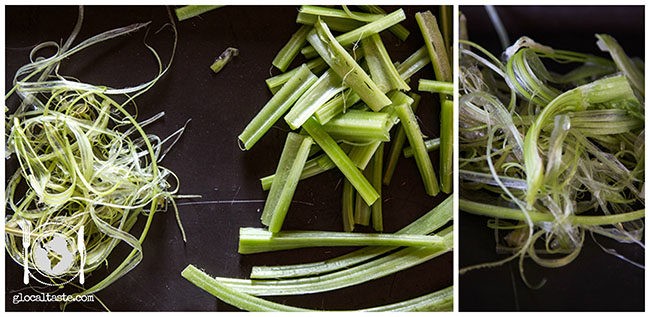There are herbs so thorny and threatening that you’d never know you could eat them. Such as milk thistle, appreciated in cuisine as in herbal medicine. Also called “saint” thistle for his extraordinary therapeutic qualities. Since ancient times it was used by doctors and herbalists to treat a wide range of diseases. Plants can grow up to two meters in height, dark green leaves have hypnotic streaks and end with strong thorns to protect their flower. In addition to being an ally of health and well-being is also very good: prepared in salads, boiled or steamed and passed back into the pan. You won’t throw anything away.
Contrary to what you might think, the most delicious part is the one close to the main body of the plant. The tip must therefore be removed because it’s too harsh. After the selection of the leaves, start the most delcated part: remove the thorns. Be careful. However, there is a simple and fast method that very few know.
Turn towards the rear and with a knife make an incision at roughly two-thirds of the height from the bottom, but do not cut completely. The aim is to increase the surface layer of the stem, so as to strip the body, taking away the thorny leaves.
After the deletion of the thorns, continue to remove the thin filaments of the fibrous part.
Here we go. Now cut the stems into shorter segments. You can eat them in a salad, or boiled or steamed (if you’re going to boil the stems, at the end put the water with fresh mint leaves in the fridge, is an excellent thirst quencher full of minerals!).
You can then stir-fry or drizzle with olive oil, salt and lemon as garnish. An idea for an appetizer-entree unusual? Try to to dip the stems into sauce of kefir and mint, have a look at the receipe… delicious!























 English
English Italiano
Italiano